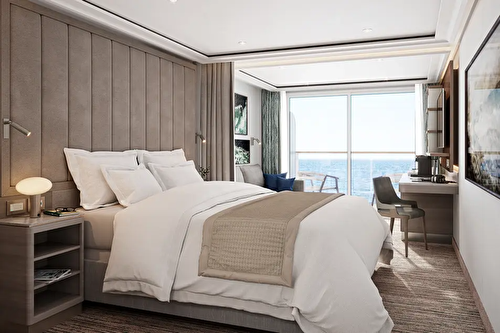Civitavecchia (Rome) to Barcelona
- 18 Oct ‘26
- 11 nights
- Departing from Civitavecchia
- Silver Ray
-
Inside price fromCall for price
-
Outside price fromCall for price
-
Balcony price fromCall for price
-
Suite price from$15,900*/pp
YOUR ITINERARY
Civitavecchia - Giardini Naxos, Sicily - Valletta, Malta - Valletta, Malta - La Goulette (Tunis), Tunisia - Trapani - Cagliari (Sardinia), Italy - Cartagena, Spain - Valencia, Spain - Barcelona, Spain


















All roads lead to Rome, and with good reason –...
Hugging a long, sweeping bay, Giardini Naxos welcomes you a...
Perched high on the imposing Sciberras Peninsula, Valletta immed...
Perched high on the imposing Sciberras Peninsula, Vall...
Until the time of the French protectorate, the medina was very ...
Surrounded by glowing turquoise waters and rugged coastline,...
The serene sea approach to Cagliari is an exquisitely beauti...
On the crossroads of mighty cultures, this Murcia...
Valencia is Spain’s third largest city and cap...
The infinite variety of street life, the nooks and crannies o...
YOUR SHIP - The Silver Ray
Silversea’s second Nova Class ship arrived in summer 2024 and promises guests seamless destination connection. Silver Ray mirrors every aspect of her sister ship, Silver Nova, including a pioneering, asymmetrical design and extraordinary use of glass in both public areas and in suite for uninterrupted views wherever you are! What’s more, Silver Ray is one of the most spacious ships ever built, offering an exceptionally high space-to-guest ratio yet remaining nimble enough to offer purity in movement, as her name suggests. She is truly a ray of light.
Description
Silversea’s second Nova Class ship arrived in summer 2024 and promises guests seamless destination connection. Silver Ray mirrors every aspect of her sister ship, Silver Nova, including a pioneering, asymmetrical design and extraordinary use of glass in both public areas and in suite for uninterrupted views wherever you are! What’s more, Silver Ray is one of the most spacious ships ever built, offering an exceptionally high space-to-guest ratio yet remaining nimble enough to offer purity in movement, as her name suggests. She is truly a ray of light.


